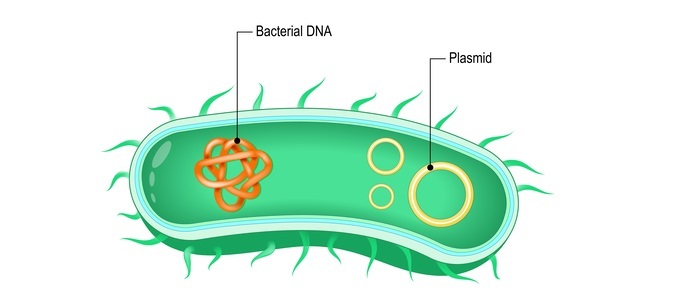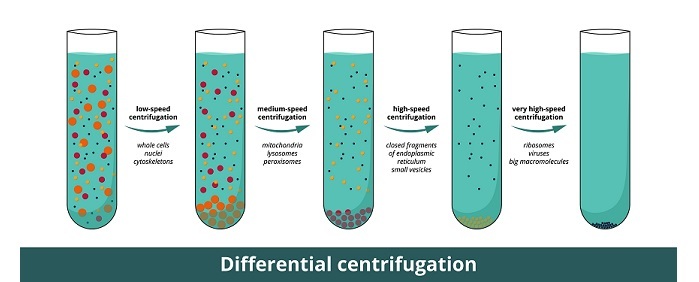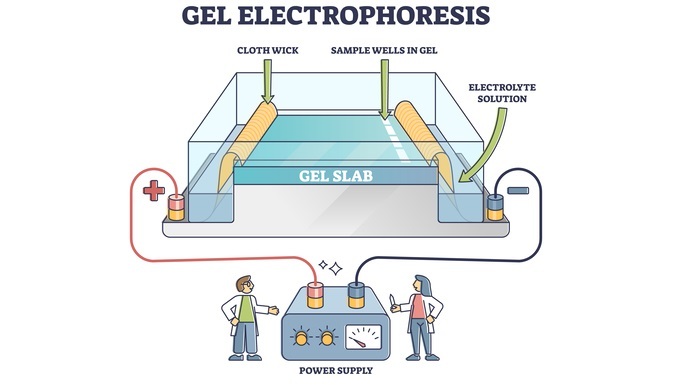
 Data Structure
Data Structure Networking
Networking RDBMS
RDBMS Operating System
Operating System Java
Java MS Excel
MS Excel iOS
iOS HTML
HTML CSS
CSS Android
Android Python
Python C Programming
C Programming C++
C++ C#
C# MongoDB
MongoDB MySQL
MySQL Javascript
Javascript PHP
PHP
- Selected Reading
- UPSC IAS Exams Notes
- Developer's Best Practices
- Questions and Answers
- Effective Resume Writing
- HR Interview Questions
- Computer Glossary
- Who is Who
Isolation of Plasmid DNA from Bacteria
Introduction
Plasmids are small, circular DNA molecules that are separate from the bacterial chromosome. They are found in bacteria and are capable of self-replication. Plasmids often carry genes that confer some selective advantage to the bacterium, such as antibiotic resistance. As such, they are important tools in genetic engineering and biotechnology. In this article, we will discuss the process of isolating plasmid DNA from bacteria.

Isolation of Plasmid DNA from Bacteria
The process of isolating plasmid DNA from bacteria involves several steps, which are outlined below.
Step 1 Bacterial Culture:
The first step in isolating plasmid DNA from bacteria is to grow a bacterial culture. This involves inoculating a liquid medium with the bacteria of interest and allowing them to grow under appropriate conditions (e.g., temperature, pH, oxygenation) until they reach a suitable density.
Step 2: Harvesting the Bacteria
Once the bacterial culture has reached the desired density, the next step is to harvest the bacteria. This can be done by centrifugation, which involves spinning the culture at high speeds to pellet the cells at the bottom of the tube. Alternatively, filtration or other separation methods may be used to isolate the bacteria from the culture medium.
Step 3: Lysis of Bacterial Cells
After the bacteria have been harvested, the next step is to lyse (i.e., break open) the cells to release the plasmid DNA. This can be done using a variety of methods, including physical disruption (e.g., sonication, homogenization), chemical lysis (e.g., detergents, enzymes), or a combination of both.
Step 4: Separation of Plasmid DNA
Once the bacterial cells have been lysed, the plasmid DNA must be separated from the rest of the cellular components (e.g., genomic DNA, proteins). This can be done using a variety of methods, including ?
Differential Centrifugation - This involves spinning the lysed bacterial cells at different speeds to separate the components based on their size and density.

Column Chromatography - This involves passing the lysate through a column containing a matrix that selectively binds to the plasmid DNA. The DNA can then be eluted from the column using a specific buffer.
Precipitation - This involves adding a salt solution to the lysate, which causes the plasmid DNA to come out of solution and form a visible pellet at the bottom of the tube. The DNA can then be washed and resuspended in a buffer.
Step 5: Purification of Plasmid DNA
Once the plasmid DNA has been separated from the cellular components, it must be purified to remove any remaining contaminants (e.g., proteins, RNA). This can be done using a variety of methods, including ?
Ethanol Precipitation - This involves adding ethanol to the plasmid DNA solution, which causes the DNA to come out of solution and form a visible pellet at the bottom of the tube. The DNA can then be washed and resuspended in a buffer.
Gel Electrophoresis - This involves running the plasmid DNA on a gel matrix, which separates the DNA fragments based on their size. The desired band (i.e., the plasmid DNA) can then be cut out of the gel and purified using a commercial kit.

Magnetic Bead Purification - This involves using magnetic beads that selectively bind to the plasmid DNA. The DNA-bound beads can then be separated from the rest of the solution using a magnetic field and washed to remove any remaining contaminants.
Applications of Plasmid DNA Isolation
The isolation of plasmid DNA from bacteria has a variety of applications in biotechnology and genetic engineering. Here are some examples ?
Gene Cloning
Plasmid DNA can be used as a vector to clone genes of interest. This involves inserting the gene into the plasmid DNA and then transforming the plasmid into a host bacterium. The bacterium will then replicate the plasmid and express the gene.
Gene Expression Analysis
Plasmid DNA can be used as a template for PCR (polymerase chain reaction), which amplifies specific DNA sequences. This can be used to analyse gene expression levels or to detect specific mutations.
Protein Production
Plasmid DNA can be used to produce recombinant proteins. This involves inserting the gene for the protein of interest into the plasmid DNA and then transforming the plasmid into a host bacterium. The bacterium will then express and secrete the recombinant protein.
Genetic Engineering
Plasmid DNA can be modified using various techniques, such as site-directed mutagenesis or restriction enzyme digestion, to create specific genetic modifications. These modified plasmids can then be used in gene editing or gene therapy applications.
Bioprocessing
Plasmid DNA can be used to produce large quantities of a specific protein or other biomolecule for use in various applications, such as drug development or industrial processes.
Conclusion
In conclusion, the isolation of plasmid DNA from bacteria is an important technique in biotechnology and genetic engineering. The process involves several steps, including bacterial culture, harvesting the bacteria, lysing the cells, separating the plasmid DNA from the cellular components, and purifying the DNA.
Plasmid DNA can be used for a variety of applications, including gene cloning, gene expression analysis, protein production, genetic engineering, and bioprocessing. The ability to isolate and manipulate plasmid DNA has revolutionized the field of biotechnology and continues to have a significant impact on many aspects of our lives.

